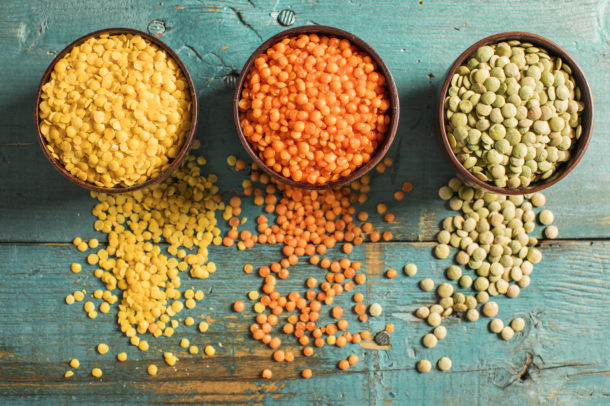By Fiona Bellefeuille, Registered Dietitian, Certified Diabetes Educator
Iron is a mineral that the body uses to produce hemoglobin, which is a protein found in red blood cells that helps carry oxygen to all parts of the body.
Some people with kidney disease may experience low iron. If your iron levels are low, you may have the following symptoms: low energy, fatigue, weakness, confusion, shortness of breath, rapid heartbeat, brittle nails, and hair loss.
How much Iron do I need?
The amount of iron you need depends on your age and sex; males need 8 mg a day, whereas females aged 19 – 49 years old need 18 mg a day, and those over 49 years old need 8 mg a day.
How can I increase the iron in my diet?
Many foods that are high in iron are restricted on a kidney diet due to their potassium and phosphorous levels. That being said, you can still get enough iron to keep you healthy if you plan your meals carefully.
Iron found in our food comes from two sources: heme iron (animal source) and non-heme iron (vegetable source). Heme iron is well absorbed by the body and is found in animal products such as meat, chicken, and fish. Non-heme iron is found in vegetable sources such as grains, legumes, tofu, kale, and collards but is not as well absorbed as heme iron. Adding a food rich in vitamin C with your non-heme iron sources will help your body to absorb it better. Some examples of kidney-friendly sources of vitamin C include strawberries, pineapple, bell peppers, and cauliflower.
Eating a balanced diet and including kidney-friendly foods from the list below can help ensure that you are meeting your iron needs
Kidney-friendly sources of Iron
| Heme Iron | Serving | Iron |
| Beef | 75 g (3 oz) | 2.5 mg |
| Crab | 75 g (3 oz) | 2.2 mg |
| Lamb | 75 g (3 oz) | 1.6 mg |
| Trout | 75 g (3 oz) | 1.4 mg |
| Eggs | 2 | 1.4 mg |
| Tuna | 75 g (3 oz) | 1.2 mg |
| Pork | 75 g (3 oz) | 0.9 mg |
| Chicken | 75 g (3 oz) | 0.9 mg |
| Salmon | 75 g (3 oz) | 0.5 mg |
| Turkey | 75 g (3 oz) | 0.5 mg |
| Sole | 75 g (3 oz) | 0.2 mg |
| Non-heme Iron* | Serving | Iron |
| Enriched cereal | 30g | 3.8 mg |
| Lentils | 1/2 cup | 3.5 mg |
| Tofu | 1/2 cup | 2.4 mg |
| Chickpeas | 1/2 cup | 1.7 mg |
| Cream of Wheat (cooked) | 3/4 cup | 1.6 mg |
| Barley (cooked) | 1/2 cup | 1.1 mg |
| Enriched pasta (cooked) | 1/2 cup | 1.0 mg |
| Enriched bread | 1 slice | 1.3 mg |
| Snow peas | 1/2 cup | 1.7 mg |
| Kale (cooked) | 1/2 cup | 0.6 mg |
| Soda crackers | 4 | 0.6 mg |
Kidney Friendly Sources of Iron
Heme Iron (well absorbed) – limit portion to 75 grams / 3 oz
- Beef
- Lamb
- Pork
- Chicken
- Turkey
- Trout / Salmon
- Tuna
- Crab
Non-heme iron (less well absorbed)*
- Enriched Cereal
- Cream of Wheat Oatmeal
- Enriched Bread
- Barley
- Enriched Pasta
- Soda Crackers
- Tofu
- Lentils
- Chickpeas
- Eggs
- Snow Peas
- Kale
- Collard Greens
- Asparagus
- Green peas
Eat non-heme iron with a food high in vitamin C to help with absorption, for example:
- Bell Peppers
- Strawberries
- Pineapple
- Cabbage
- Cauliflower
- Kale
*Remember to include a food rich in vitamin C with the non-heme iron foods (e.g. strawberries, pineapple, peppers and cauliflower.)
